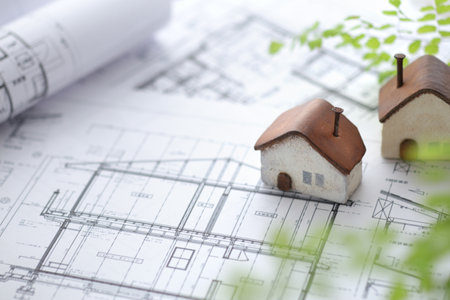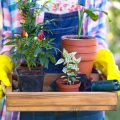1. Assessing Your Outdoor Space
Before you start picking out flowers or building garden beds, its important to understand your outdoor space. A well-planned garden starts with a solid foundation, and that means evaluating the key elements of your yard: layout, sunlight, climate, and soil. This step helps you make smart decisions that save time and money down the road.
Yard Layout
Take a walk around your yard and note its shape and size. Is it flat or sloped? Do you have any existing trees, patios, or fences? Think about how you use the space — do kids play there? Do you want an area for entertaining guests? Sketching a simple map can help you visualize where everything is and plan accordingly.
Tips for Mapping Your Yard:
- Use graph paper or a digital tool like Google Drawings
- Mark permanent features like driveways, sheds, or decks
- Include measurements for more accurate planning
Sunlight Exposure
The amount of sunlight your yard gets will impact what plants will thrive. Observe your outdoor space at different times of the day to see where the sun hits and for how long.
Sunlight Categories:
| Light Level | Description | Common Plants |
|---|---|---|
| Full Sun | 6+ hours of direct sunlight daily | Tomatoes, Lavender, Roses |
| Partial Sun/Shade | 3–6 hours of sun per day | Hydrangeas, Peppers, Hostas |
| Full Shade | Less than 3 hours of direct sunlight | Ferns, Impatiens, Heucheras |
Your Local Climate Zone
The USDA Plant Hardiness Zone Map is a great tool for figuring out which plants grow best in your region. The U.S. has a wide range of climates—from hot deserts to chilly northern states—so knowing your zone helps you choose plants that will thrive year-round.
How to Find Your Zone:
- Visit the USDA website and enter your ZIP code
- Your zone will be a number from 1 (coldest) to 13 (warmest)
- Select plants labeled for your specific zone range
Soil Conditions
Your soil type affects drainage and nutrient availability. Grab a small shovel and dig into the ground to examine your soils texture—does it feel sandy, sticky like clay, or crumbly like loam?
Main Soil Types:
| Soil Type | Description | Drainage Quality |
|---|---|---|
| Sandy Soil | Loses water quickly; light and gritty texture | Poor – needs frequent watering and added compost |
| Clay Soil | Dense and sticky when wet; holds nutrients well but drains slowly | Poor – may require organic matter for improvement |
| Loamy Soil | A balanced mix of sand, silt, and clay; ideal for most plants | Excellent – retains moisture yet drains well |
Pro Tip:
You can buy an affordable soil test kit online or at your local garden center to check pH levels and nutrient content. Knowing if your soil is acidic or alkaline can help you choose the right plants or amendments.
Taking time to assess these elements will help guide every decision you make while designing your dream garden. Up next: we’ll dive into setting goals and defining your garden’s purpose!
2. Designing Your Garden Layout
Designing your garden layout is where the fun really begins. Whether youre dreaming of a peaceful flower oasis or a productive vegetable patch, planning the layout helps bring your vision to life. A well-thought-out design makes gardening easier, more enjoyable, and better suited to your lifestyle.
Start with a Sketch
You don’t need to be an artist—just grab some graph paper or use a free online garden planner tool. Start by drawing your yard’s boundaries, then add permanent features like your house, driveway, paths, fences, and trees. This gives you a clear picture of what space you have to work with.
Popular Free Online Garden Planning Tools:
| Tool Name | Best For | Website |
|---|---|---|
| SmartDraw | Detailed landscape planning | smartdraw.com |
| GrowVeg | Vegetable garden layouts | growveg.com |
| Garden Planner Online | User-friendly drag-and-drop design | smallblueprinter.com |
Match Your Garden to Your Lifestyle
Think about how you want to use your garden. Do you want fresh herbs outside your kitchen window? A play area for kids? A peaceful spot for morning coffee? Here are some common garden types and their features:
| Garden Type | Main Features | Best For |
|---|---|---|
| Vegetable Patch | Raised beds, compost bin, sunny location | Homegrown produce lovers |
| Flower Oasis | Colorful blooms, pollinator-friendly plants, decorative borders | Aesthetic beauty & supporting bees/butterflies |
| Herb Garden | Pots or small beds near kitchen, good drainage | Cooks and foodies |
| Backyard Retreat | Lawn chairs, shade trees, water feature | Relaxation and entertaining guests |
Consider Sunlight and Water Access
Before finalizing your layout, take note of how much sunlight different parts of your yard receive throughout the day. Most vegetables need full sun (at least 6 hours), while shade-loving plants thrive under trees or along fences. Also plan for easy access to water—whether it’s a garden hose hookup or drip irrigation system.
Add Paths and Zones for Functionality
Create clear paths so you can move around easily without stepping on plants. Use mulch, gravel, or pavers for pathways. Divide your space into zones—like planting areas, seating corners, and tool storage—to keep everything organized and functional.
Pro Tip:
If youre not sure about spacing or placement, use stakes and string in your yard to map out the layout before digging in. It’s an easy way to visualize the space in real size.
A thoughtfully designed garden layout sets the foundation for a space that reflects your personality and meets your everyday needs. Take your time sketching ideas and experimenting with layouts until it feels just right.
![]()
3. Choosing the Right Plants
One of the most exciting parts of planning your dream garden is picking the plants that will bring your outdoor space to life. But before you head to the nearest nursery, it’s important to choose plants that are well-suited for your local climate, soil type, and the overall design of your home. Selecting native and climate-appropriate plants not only makes your garden easier to maintain—it also helps support local ecosystems and saves water.
Why Native and Climate-Appropriate Plants Matter
Native plants have adapted over time to thrive in specific regions across the U.S., meaning they typically require less water, fertilizer, and pesticides. They’re also more resistant to local pests and diseases. Climate-appropriate plants—those that match your region’s rainfall, temperature, and sun exposure—offer similar benefits.
Benefits of Native and Climate-Friendly Plants:
- Lower maintenance and watering needs
- Better resistance to pests and weather extremes
- Support for pollinators like bees and butterflies
- Harmonize with your home’s natural surroundings
Understanding Your USDA Plant Hardiness Zone
The USDA Plant Hardiness Zone Map is a helpful tool for identifying which plants are likely to thrive in your area. Each zone is based on the average minimum winter temperature. Knowing your zone can help you select perennials that will survive year after year.
| Region | USDA Zones | Examples of Suitable Plants |
|---|---|---|
| Northeast (e.g., NY, MA) | Zones 4–7 | Black-eyed Susan, Eastern Redbud, Hostas |
| Southeast (e.g., FL, GA) | Zones 7–10 | Coneflower, Southern Magnolia, Lantana |
| Midwest (e.g., IL, OH) | Zones 3–6 | Prairie Dropseed, Purple Coneflower, Daylilies |
| Southwest (e.g., AZ, NM) | Zones 5–10 | Lavender, Agave, Desert Marigold |
| West Coast (e.g., CA, WA) | Zones 6–10 | California Poppy, Manzanita, Salvia |
Selecting Plants Based on Sunlight and Soil Conditions
Your gardens success also depends on how much sunlight it receives and what kind of soil youre working with. Before buying plants, observe whether areas of your yard get full sun (6+ hours), partial sun (3–6 hours), or shade (less than 3 hours). You should also test your soil’s drainage and pH levels using a simple home testing kit.
Plant Selection by Light Needs:
| Light Level | Suggested Plants |
|---|---|
| Full Sun | Zinnias, Tomatoes, Lavender |
| Partial Sun/Shade | Ferns, Impatiens, Hydrangeas |
| Full Shade | Hostas, Bleeding Heart, Coral Bells |
Create a Cohesive Look That Matches Your Home Style
The right plants should do more than survive—they should enhance your garden’s beauty and reflect your personal style. For example:
- Cottage-style homes: Soft blooms like roses or peonies create a romantic feel.
- Modern homes: Clean lines with ornamental grasses or succulents offer a sleek look.
- Traditional homes: Classic shrubs like boxwood or azaleas provide symmetry and structure.
No matter where you live in the U.S., choosing the right mix of native and climate-appropriate plants will set the foundation for a healthy, beautiful garden that reflects both your environment and personality.
4. Preparing and Building Your Garden
Now that you’ve planned your dream garden, it’s time to get your hands dirty! This part of the guide walks you through the essential steps of soil preparation, building raised beds, installing irrigation systems, and setting up garden structures. Whether youre a first-time gardener or a seasoned green thumb, these steps will help set your garden up for success.
Soil Preparation
Good soil is the foundation of any thriving garden. Start by testing your soil’s pH and nutrient levels using a home test kit or by sending a sample to a local extension service. Based on your results, you may need to amend the soil with compost, organic matter, or specific nutrients.
Basic Soil Amendments
| Amendment | Purpose |
|---|---|
| Compost | Adds organic matter and improves soil texture |
| Lime | Raises pH in acidic soils |
| Sulfur | Lowers pH in alkaline soils |
| Bone Meal | Adds phosphorus for root development |
Building Raised Beds
Raised beds are popular in American gardens because they improve drainage, reduce soil compaction, and make gardening more accessible. Here’s how to build simple raised beds:
Steps to Build a Basic Raised Bed
- Select rot-resistant wood like cedar or redwood.
- Create a rectangular frame (commonly 4 ft x 8 ft) using boards at least 6-12 inches high.
- Screw the boards together securely at each corner.
- Place the bed in a sunny location and line the bottom with cardboard to suppress weeds.
- Fill with a mix of topsoil, compost, and other amendments.
Installing Irrigation Systems
A consistent watering system makes maintaining your garden much easier—especially during hot American summers. Drip irrigation is one of the most efficient options for home gardens.
Irrigation Options at a Glance
| Irrigation Type | Description | Best For |
|---|---|---|
| Drip Irrigation | Sends water directly to plant roots through tubing and emitters | Beds with vegetables or flowers; water conservation |
| Sprinklers | Covers large areas evenly from above | Lawn areas or ornamental gardens |
| Soaker Hoses | Pores along hose allow water to seep out slowly along its length | Shrub beds or rows of plants |
Setting Up Garden Structures
Certain plants need support as they grow, and some garden features can enhance both function and beauty. Consider incorporating these structures:
- Trellises: Great for climbing plants like tomatoes, cucumbers, or beans.
- Cages: Commonly used for tomatoes to keep them upright and off the ground.
- Pergolas or Arbors: Add visual interest and can support flowering vines like clematis or wisteria.
The right setup makes gardening easier and more enjoyable. With healthy soil, strong beds, efficient watering, and helpful structures in place, youre well on your way to creating a productive and beautiful garden space.
5. Maintaining and Evolving Your Garden
Once your dream garden is planted, the real journey begins. A beautiful and productive garden needs regular care and attention throughout the year. With some simple seasonal maintenance, smart pest control strategies, and a willingness to adapt over time, you can keep your garden thriving in every season.
Seasonal Maintenance Tips
Each season brings different needs for your garden. Heres a quick guide to help you stay on top of what needs to be done:
| Season | Tasks |
|---|---|
| Spring | – Clean up dead leaves and debris – Start planting cool-season vegetables – Fertilize soil and refresh mulch – Prune shrubs and trees as needed |
| Summer | – Water deeply during dry spells – Deadhead flowers to encourage more blooms – Watch for pests and treat promptly – Harvest vegetables regularly |
| Fall | – Remove spent plants and compost them – Plant fall crops or cover crops – Rake leaves and add to compost – Protect sensitive plants from frost |
| Winter | – Prune dormant trees and shrubs – Plan next years garden layout – Maintain tools and equipment – Protect garden beds with mulch or covers |
Pest Control the Smart Way
No one likes uninvited guests in the garden. The key is early detection and natural prevention when possible. Here are some tips:
- Encourage beneficial insects: Ladybugs, lacewings, and spiders naturally reduce pest populations.
- Use companion planting: For example, plant marigolds near tomatoes to deter nematodes.
- Inspect regularly: Check leaves for holes, spots, or bugs weekly so you can act fast.
- Avoid harsh chemicals: Opt for neem oil or insecticidal soap for eco-friendly solutions.
Evolving with Your Garden Over Time
Your lifestyle, taste, or even climate conditions might change over the years—your garden should grow with you. Consider these ways to evolve your space:
Add New Features Gradually
You don’t need to do everything at once. Maybe this year it’s a raised bed for herbs; next year, add a small pond or trellis for climbing roses.
Edit What Doesn’t Work
If certain plants arent thriving despite your best efforts, replace them with low-maintenance native species suited to your local USDA hardiness zone.
Create Flexible Spaces
If you’re gardening in a small backyard or urban setting, use containers or movable planters so you can reconfigure the space as needed—for entertaining, kids playing, or seasonal changes.
Your Garden Is a Living Project
The most important thing to remember is that gardens aren’t static—they’re always changing. Embrace the process, stay curious about what works best in your environment, and enjoy the satisfaction of nurturing something beautiful right outside your door.


